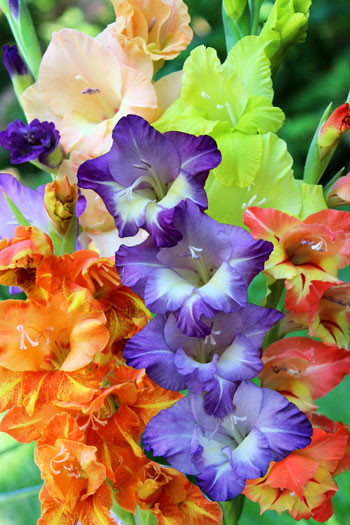If you dug and stored your gladiolus last fall, you probably found lots of tiny cormlets – aka cormels – clustered around their bases. Plant those this spring and before long you’ll have hundreds of glads for free. Cliff Hartline in the NAGC’s Glad World offers these expert tips:
“Generally speaking, any cormel that falls thru a 1/8-inch screen does not produce well. . . . I only plant cormels the size of a pencil eraser or larger. I pass all my cormels over a 1/4-inch screen and plant those that do not fall through. . . . The larger ones will definitely give you a larger corm to harvest and . . . if they are planted early, they will often bloom in September. . . .
“One year after I finished digging my large corms about September 20, I had the time to dig my glads from cormels. After pulling a few out of the ground, I saw that the corms were the size of a quarter or smaller. I decided to foliar feed them, and I applied fungicide at the same time.

We had a frost October 15 so I dug them immediately after that. Many of the corms were jumbos, most were large, and very few were smaller. I would encourage people to wait until frost to dig cormel stock, and foliar feed late in the year. . . . The September feeding seemed to rejuvenate the growth and the fungicide kept the foliage healthy.”
We’ll remind you that cormlets have nearly impenetrable outer shells and they’ll sprout much better if you either nick or gently crack these or simply dissolve them by soaking in full-strength household bleach for a few hours immediately before planting.
Plant cormlets in full sun, 1-2 inches deep and 1-2 inches apart, depending on size. Keep the soil moist but not soggy until grass-like foliage emerges and, for optimal growth, throughout the summer.
Good luck, have fun, and let us know how they do for you!











